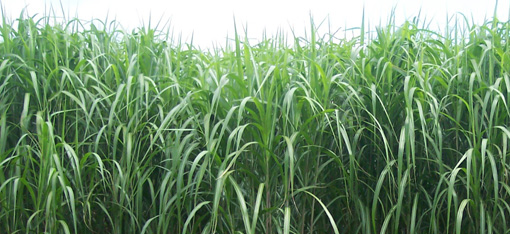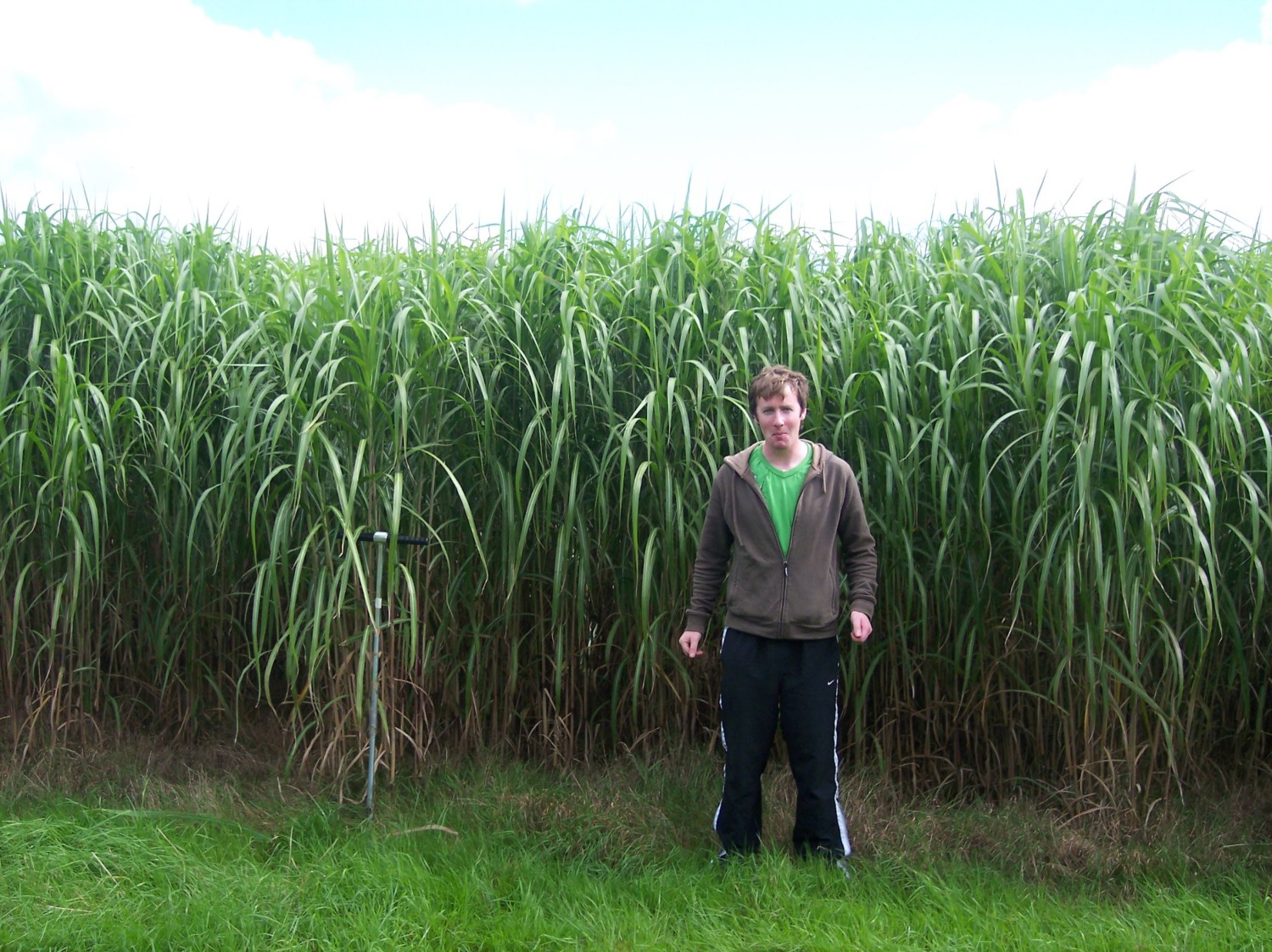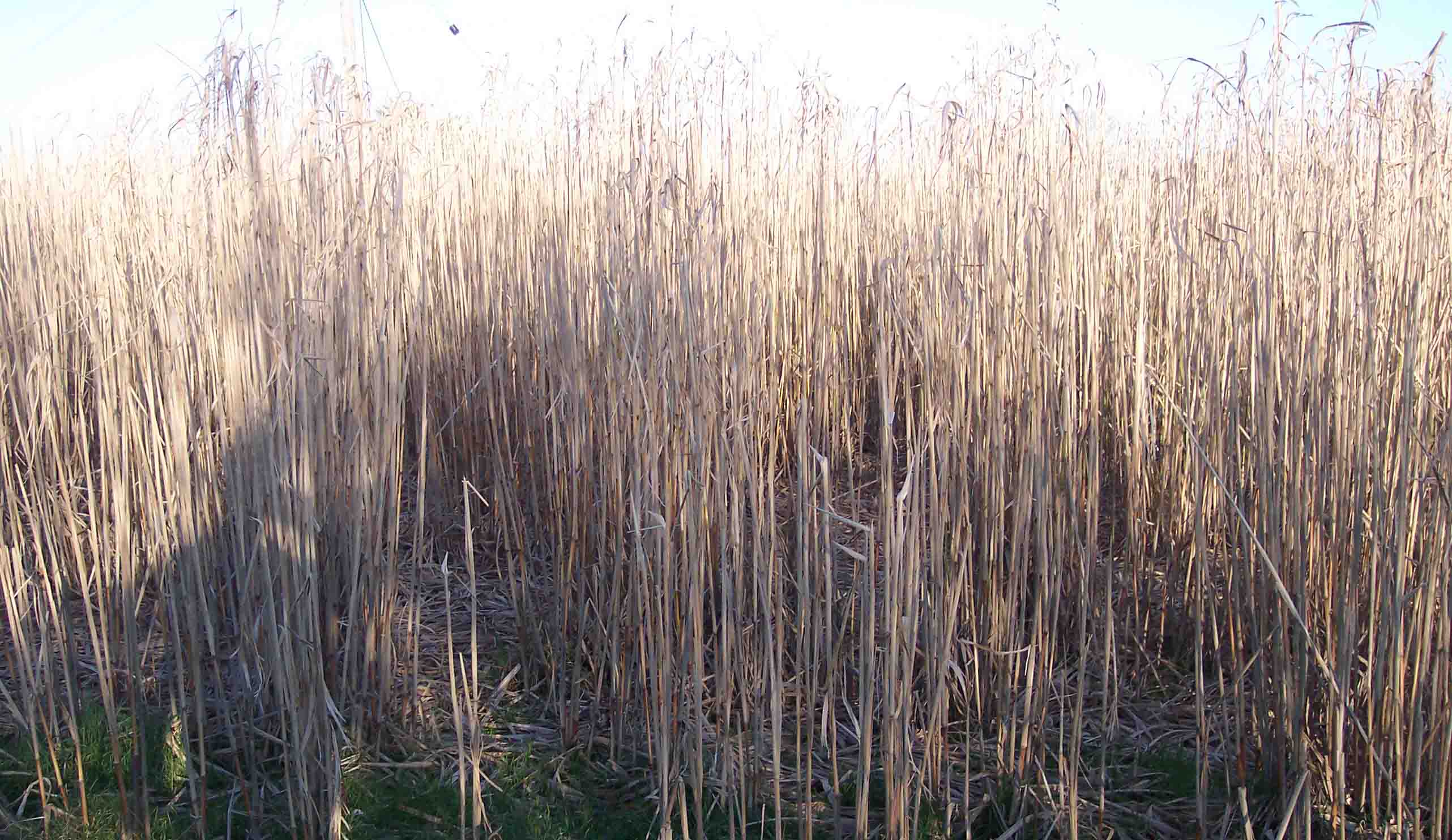Analysis of Miscanthus

Background
Miscanthus is a perennial C4 grass that originated from Asia but was introduced to Europe in the 1930s when its main use was as an ornamental grass. However, the development of Miscanthus x giganteus, a high-yielding sterile hybrid of the M. sinensis and M. sacchariflorus varieties, led to increased interest in utilizing this variety as an energy crop. Miscanthus is a rare case of a C4 grass that can grow in temperate climates; it can photosynthesise down to a temperature of < 5oC. The crop is also attractive because it has low requirements for fertilizer and pesticides. Miscanthus is closely related to sugar cane, and the two often hybridise in the wild.There are numerous varieties of Miscanthus that have been grown experimentally but fewer varieties tend to be grown commercially. In Ireland, for example, Miscanthus x giganteus is the only commercial crop that has been established so far, although elsewhere in Europe, particularly in the regions that experience colder winters, M. sinensis has been grown commercially.

Field of Miscanthus in Western Ireland
M. x giganteus is sterile, and so must be propagated vegetatively. This can either involve the planting of rhizome cuttings or plantlets. Crop growth will start in the Spring once daytime temperatures exceed 10oC. Growth is very rapid, in May, June, and July, and results in stems that may reach a height of 3+ metres. Once the canopy closes, the lower layers of leaves begin to senesce. Shoot growth continues through August and September with full senescence occurring following the first frosts of the autumn.
During the end of the growing season, nutrients are translocated from the stems and leaves to the rhizomes for storage and utilisation in the following season. The efficient use of nutrients by Miscanthus varieties means that artificial fertilisation levels need not be high. The low fertiliser and pesticide requirements of Miscanthus mean it is a relatively environmentally friendly crop.
Harvesting of Miscanthus is carried out annually and can occur after crop senescence until just before re-growth in the following spring. It is important that the crop has senesced so that translocation of assimilates to the rhizomes has occurred. Current practices involving Miscanthus seem to be geared towards harvesting the biomass in the spring before the start of the growing season. The reasoning behind this is that the later the harvesting, the lower will be both the moisture content and the inorganic mineral content; these are important qualities in biomass combustion - the primary end use for Miscanthus at this time.
Delaying the point of harvest from the start to the end of the harvest window has been shown to result in a decrease in the amount of standing biomass harvested from the field. That is mostly attributable to the loss of leaf material from the plant.
Analysis of Miscanthus at Celignis
Celignis Analytical can determine the following properties of Miscanthus samples:
Sugars (Monosaccharides)
Sugar Alcohols and Uronic Acids
Lignin and Extractives
- Lignin (Klason)
- Lignin (Klason - Protein Corrected)
- Lignin (Acid Soluble)
- Acid Insoluble Residue
- Extractives (Ethanol-Soluble)
- Extractives (Water-Soluble)
- Extractives (Exhaustive - Water then Ethanol)
- Lignin S/G Ratio
- Extractives (Water-Insoluble, Ethanol Soluble)
- Protein Content of Acid Insoluble Residue
- Carbon Content of Acid Insoluble Residue
- Hydrogen Content of Acid Insoluble Residue
- Nitrogen Content of Acid Insoluble Residue
- Sulphur Content of Acid Insoluble Residue
Amino
Acids
Thermal Properties
- Moisture
- Ash
- Ash (Acid Insoluble)
- Carbon
- Hydrogen
- Nitrogen
- Sulphur
- Oxygen
- Volatile Matter
- Fixed Carbon
- Gross Calorific Value
- Net Calorific Value
- Chlorine
- Ash Shrinkage Starting Temperature (Oxidising)
- Ash Deformation Temperature (Oxidising)
- Ash Hemisphere Temperature (Oxidising)
- Ash Flow Temperature (Oxidising)
- Ash Shrinkage Starting Temperature (Reducing)
- Ash Deformation Temperature (Reducing)
- Ash Hemisphere Temperature (Reducing)
- Ash Flow Temperature (Reducing)
- Thernogram - Under Nitrogen
- Thermogram - Under Air
Major and Minor Elements
Cellulose Content of Miscanthus
Celignis founder Daniel Hayes has extensive experience in the analysis of Miscanthus samples and has characterised numerous plants and varieties of the species. One research project involved sampling plants each month from the period of senescence until harvest from seven different Miscanthus stands at various locations throughout Ireland. Each plant sampled was separated into the following anatomical fractions: internodes (with a grouping for each metre of height of the stem, e.g. three separate internode samples for a plant three metres in height); nodes (also grouped according to height); live leaf blades; live leaf sheaths; dead leaf blades; dead leaf sheaths; and flowers.The study found that Miscanthus has a good cellulose content (approx. 40% on a whole plant basis) but that there was significant variability between different parts of the plant and between the different Miscanthus varieties. The cellulose content was found to be greatest in the stem sections and significantly lower in the leaf blades. Smaller plants were also found to typically have a lower cellulose content than taller plants. Due to the loss of leaves over the harvest window the cellulose content of the harvestable plant was found to increase.

A Miscanthus field late in the harvest window, when most of the leaves have shed from the plant.
Click here to see the Celignis Analysis Packages that determine cellulose content.
Hemicellulose Content of Miscanthus
Arabinoxylan is the main hemicellulose in Miscanthus. This means that xylose is the principal hemicellulose sugar, with a lower content of arabinose, and galactose typically being the third most abundant sugar. Mannose and rhamnose are usually only present in trace amounts. The hemicellulose content varies significantly between different parts of the plant, with higher contents in the leaves than in the stems and the highest contents observed in the flowers. There are significant differences in hemicellulose content between productive (tall) plants and less productive (smaller) plants. Hemicellulose content also varies between the different varieties, with Miscanthus x giganteus typically having a lower hemicellulose content than other varieties, such as M. x sinensis.Click here to see the Celignis Analysis Packages that determine hemicellulose content.
Lignin Content of Miscanthus
The lignin content of Miscanthus can also vary greatly. It is typically highest in the stem sections, particularly in the lower stem. Lower lignin contents are found in the leaves and flowers. As a result of leaf loss over the harvest window the lignin content of harvestable biomass tends to increase with delayed harvests.Click here to see the Celignis Analysis Packages that determine lignin content.
Starch Content of Miscanthus
The starch content of Miscanthus varies between the different anatomical components of the plant. Typically it is highest in the leaves, where photosynthesis takes place, and lower in the stems. The starch content can also vary according to the maturity of the plant.Click here to see the Celignis Analysis Packages that determine starch content.
Uronic Acid Content of Miscanthus
Uronic acids are present in the hemicelluloses in Miscanthus and are typically more abundant in the early-stages of growth. Furthermore, the concentrations of uronic acids tends to be greatest in the nodes, lower in the internodes, and at intermediate levels in the leaves.Click here to read more about uronic acids and to see the Celignis Analysis Packages that determine uronic acid content.
Enzymatic Hydrolysis of Miscanthus
We can undertake tests involving the enzymatic hydrolysis of Miscanthus. In these experiments we can either use a commercial enzyme mix or you can supply your own enzymes.We also offer analysis packages that compare the enzymatic hydrolysis of a pre-treated sample with that of the native original material.
Click here to read more about enzymatic hydrolysis and to see the various analysis packages that we offer.
Ash Content of Miscanthus
Miscanthus has an ash content typical of grasses. The relative proportion of ash varies between different anatomical fractions of the plant, with higher amounts in the leaves and less in the stem sections. As a result of this, the ash content of harvestable biomass decreases with time along the harvest window, a reflection of the loss of leaves from the standing plant.Click here to see the Celignis Analysis Packages that determine ash content.
Heating (Calorific) Value of Miscanthus
Miscanthus has a good heating value, meaning that it is suitable for utilisation in boilers for the production of heat and/or electricity. However the effective heating value will depend greatly on the moisture content of the crop. This is highest at the early period of the harvest window but decreases significantly over time. For this reason most Miscanthus is currently harvested at later points in the harvest window (e.g. March/April).Click here to see the Celignis Analysis Packages that determine heating value.
Biomethane Potential (BMP) of Miscanthus
Due to its high productivity, Miscanthus is considered to be a promising energy crop feedstock for anaerobic digestion. However, when compared with traditional AD feedstocks such as maize (corn), it contains a greater proportion of more recalcitrant lignocellulosic constituents (e.g. lignin) and less of the more labile components such as starch. This can result in biochemical methane potential (BMP) values for Miscanthus (harvested in spring) being around 100-150 litres per kg of volatile solids, whilst they are typically more than twice this for starch.However, whilst Miscanthus is typically harvested in the spring when the standing biomass is driest (an important property when using this feedstock for combustion), the crop stops growing in the autumn and can potentially be harvested then. At that point the standing biomass in the field will be greater as the majority of the leaves will still be on the plant. These leaves also contain less lignin and more water-soluble carbohydrates than the stems. Experiments have shown that the BMP for autumn-harvested Miscanthus is significantly higher than for spring-harvested Miscanthus and that, coupled with the higher harvestable biomass associated with an autumn crop, the total biomethane yield from a hectare of autumn-harvested Miscanthus can exceed that which could be obtained from a hectare of maize.
Of course, the actual biomethane produced from a Miscanthus crop will depend on the particular conditions of that stand as well as the time of harvest and other factors. For that reason we recommend that a BMP test is undertaken.
Click here to see the Celignis Analysis Packages that determine the biomethane potential (BMP) and here to read more about anaerobic digestion and the most important analytes for this process.
Bulk Density of Miscanthus
At Celignis we can determine the bulk density of biomass samples, including Miscanthus, according to ISO standard 17828 (2015). This method requires the biomass to be in an appropriate form (chips or powder) for density determination.Click here to see the Celignis Analysis Packages that determine bulk density.
Basic Density of Miscanthus
At Celignis we can determine the basic density of some suitable biomass samples. The method requires the biomass to be in an appropriate form (chips) for density determination.Click here to see the Celignis Analysis Packages that determine basic density.
| Next Feedstock |
Go Back to List of Feedstocks.
Energy
Crops
Agricultural Residues and Wastes
Industrial Residues and Wastes
Municipal
Wastes
Biorefinery
Products






